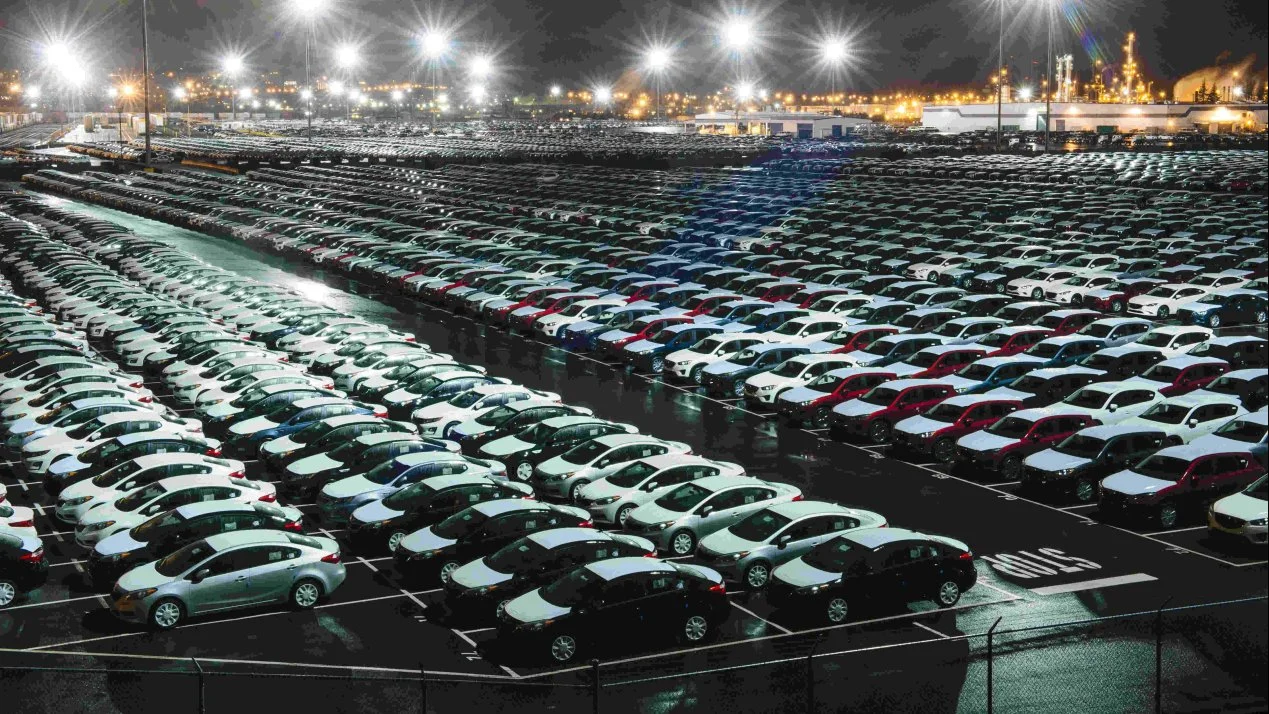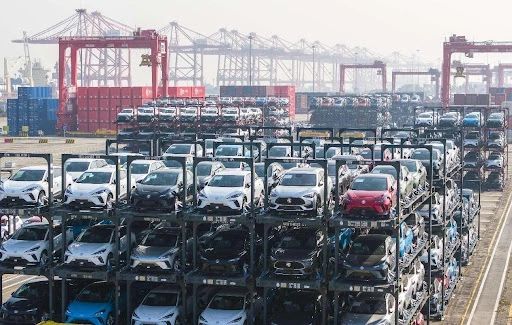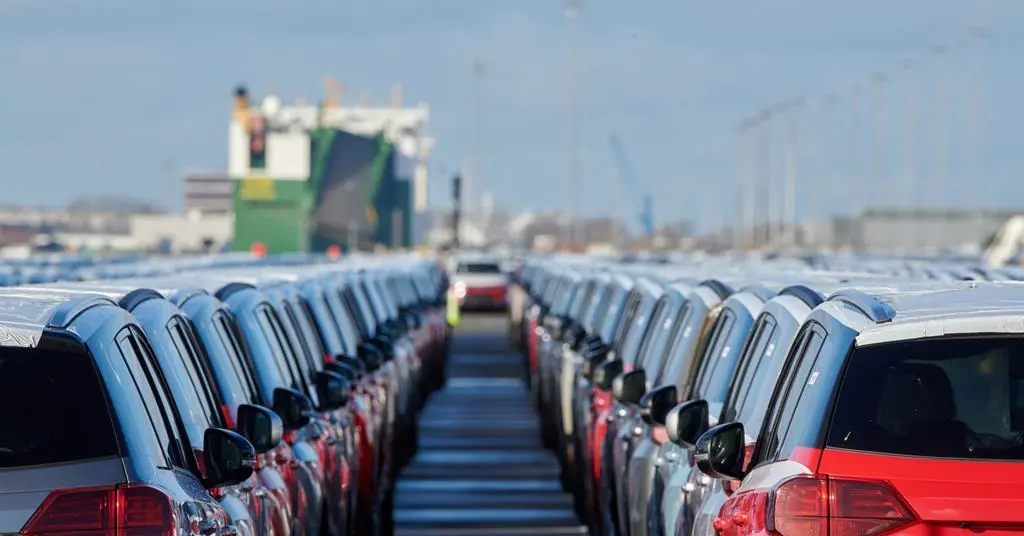When we think about port efficiency, container handling often dominates the conversation. However, another critical challenge lurks in the shadows of maritime logistics—vehicle congestion. As global trade volumes continue to surge, ports worldwide are grappling with unprecedented numbers of vehicles flowing through their facilities, creating operational bottlenecks that ripple throughout the supply chain.
This often-overlooked aspect of port operations warrants closer examination, as vehicle congestion creates a cascade of consequences that impact not just port operations but global trade efficiency, environmental sustainability, and ultimately, consumer costs.
The Growing Scale of Port Vehicle Congestion
Modern ports serve as crucial nodes in the global automotive supply chain, handling millions of vehicles annually in various capacities:
- Roll-on/Roll-off (RoRo) Operations: Major automotive ports process hundreds of thousands of vehicles for import and export yearly, with some facilities handling over 800,000 units annually.
- Terminal Transport Vehicles: Terminal tractors, trucks, and specialized equipment move constantly throughout port facilities, creating complex traffic patterns.
- External Transport: Hundreds of trucking companies dispatch thousands of vehicles daily to collect and deliver cargo, creating surges at entry and exit points.
- Support Vehicles: Maintenance crews, security patrols, administrative staff, and visitors generate additional vehicle movements throughout facilities.
Each of these vehicle categories competes for limited space on roadways, staging areas, and berths throughout the port, creating a perfect storm for congestion when coordination falters.

Credit: Mexico Business News
"Port congestion has become the Achilles' heel of global supply chains. When vehicles can't move efficiently through maritime gateways, the entire logistics network suffers cascading delays that ultimately impact everyone from manufacturers to end consumers." - Dr. Jean-Paul Rodrigue, Department of Global Studies & Geography, Hofstra University
The Multifaceted Impact of Vehicle Congestion
The consequences of port vehicle congestion extend far beyond simple traffic jams, creating multiple layers of challenges:
Operational Inefficiencies
When vehicles cannot move freely throughout port facilities, operational efficiency deteriorates rapidly:
- Vessel Delays: When vehicles cannot be loaded or unloaded efficiently, vessels remain at berth longer than scheduled, creating cascading scheduling problems and increased demurrage costs.
- Equipment Underutilization: Specialized loading equipment and personnel sit idle when vehicles cannot reach their designated positions on time.
- Storage Capacity Limitations: Inefficient vehicle distribution and movement create artificial capacity constraints, limiting the port's throughput potential.
- Processing Bottlenecks: Gate operations and processing checkpoints become overwhelmed during peak periods, creating long queues and processing delays.
Economic Consequences
Vehicle congestion generates significant direct and indirect costs throughout the maritime logistics chain:
- Demurrage and Detention Charges: When vessels or containers remain at port beyond allocated time windows, substantial daily penalties accumulate.
- Labor Overtime: Delayed operations often require extended working hours, triggering overtime pay and increased operational costs.
- Fuel Waste: Idling vehicles in queues and congested areas consume fuel without productive movement, adding to operational expenses.
- Opportunity Costs: Perhaps most significantly, congestion reduces the port's overall throughput capacity, limiting potential revenue and growth.
Environmental Impact
The environmental consequences of port vehicle congestion are substantial but often overlooked:
- Increased Emissions: Idling vehicles and stop-start traffic patterns significantly increase fuel consumption and emissions, contributing to local air pollution and global carbon footprints.
- Extended Operational Hours: When ports must operate longer to compensate for congestion-related inefficiencies, the environmental impact of lighting, equipment operation, and support services grows proportionally.
- Community Impact: Congestion often spills beyond port boundaries, affecting surrounding communities with noise, air quality issues, and quality of life concerns.
Supply Chain Reliability
Perhaps the most far-reaching consequence of port vehicle congestion is its impact on supply chain predictability:
- Schedule Uncertainty: When port transit times become unpredictable, the entire logistics chain must build in buffers, creating inefficiencies throughout the system.
- Inventory Management Challenges: Manufacturing operations relying on just-in-time delivery models face production disruptions when port congestion creates unpredictable lead times.
- Service Level Degradation: Carriers and logistics providers struggle to meet service level agreements when port performance is unpredictable, creating customer satisfaction issues.
Root Causes of Port Vehicle Congestion
Understanding the fundamental causes of port vehicle congestion is essential for developing effective solutions:
Infrastructure Limitations
Many ports face physical constraints that exacerbate congestion issues:
- Limited Access Points: Insufficient entry and exit gates create bottlenecks during peak periods.
- Inadequate Internal Roadways: Narrow or insufficient internal road networks limit vehicle flow and create chokepoints.
- Suboptimal Layout: Historical port designs often fail to accommodate modern traffic volumes and vehicle sizes.
- Insufficient Staging Areas: Limited space for vehicle queuing and staging forces impromptu solutions that further disrupt traffic flow.

Credit: People's Daily
Operational Visibility Gaps
Limited visibility into real-time vehicle locations and movements creates coordination challenges:
- Fragmented Monitoring Systems: Many ports lack integrated vehicle tracking capabilities across their facilities.
- Manual Processes: Reliance on paper documentation and manual inspections creates processing delays and information gaps.
- Communication Silos: Different operational departments often use separate systems with limited data sharing.
- Reactive Management: Without real-time visibility, port operators can only react to congestion after it occurs rather than preventing it proactively.
Coordination Challenges
Port operations involve multiple stakeholders whose activities must be carefully coordinated:
- Carrier Schedule Variability: Vessel arrival uncertainty creates ripple effects throughout landside operations.
- Trucking Company Coordination: Hundreds of independent trucking companies may serve a single port, each with limited visibility into overall traffic patterns.
- Terminal Operator Independence: Multiple terminals within a port often operate independently, with limited cross-terminal coordination.
- Customs and Regulatory Processes: Inspection and compliance requirements can create unpredictable delays in vehicle processing.
Volume Surges and Variability
Traffic patterns at ports are inherently variable, creating planning challenges:
- Vessel Bunching: Weather delays and schedule disruptions can cause multiple vessels to arrive simultaneously, creating surge demands.
- Seasonal Variations: Many ports experience significant seasonal volume fluctuations, particularly in the automotive and agricultural sectors.
- Daily Peak Periods: Trucking operations often concentrate around specific hours, creating predictable but intense congestion periods.
- Extraordinary Events: Labor actions, weather events, or global supply chain disruptions can create abnormal traffic patterns that overwhelm standard processes.
Conclusion: The Path Forward
Vehicle congestion in ports represents one of the most significant yet underappreciated challenges in global logistics. As trade volumes continue to grow, addressing this challenge will become increasingly critical for maintaining efficient supply chains and competitive port operations.
The most promising path forward combines technological innovation, process optimization, stakeholder collaboration, and targeted infrastructure investments. Ports that successfully implement comprehensive congestion management strategies stand to gain significant competitive advantages through improved operational efficiency, reduced costs, and enhanced service reliability.
As the maritime industry continues to evolve, vehicle congestion management will likely emerge as a key differentiator between world-class ports and those struggling to keep pace with global trade demands. Forward-thinking port operators are already recognizing this reality and investing in the systems, processes, and partnerships needed to ensure smooth vehicle flows throughout their facilities.
By addressing the challenge of vehicle congestion head-on, ports can unlock significant hidden capacity, improve environmental performance, and better serve the needs of global supply chains in an increasingly competitive maritime landscape.
